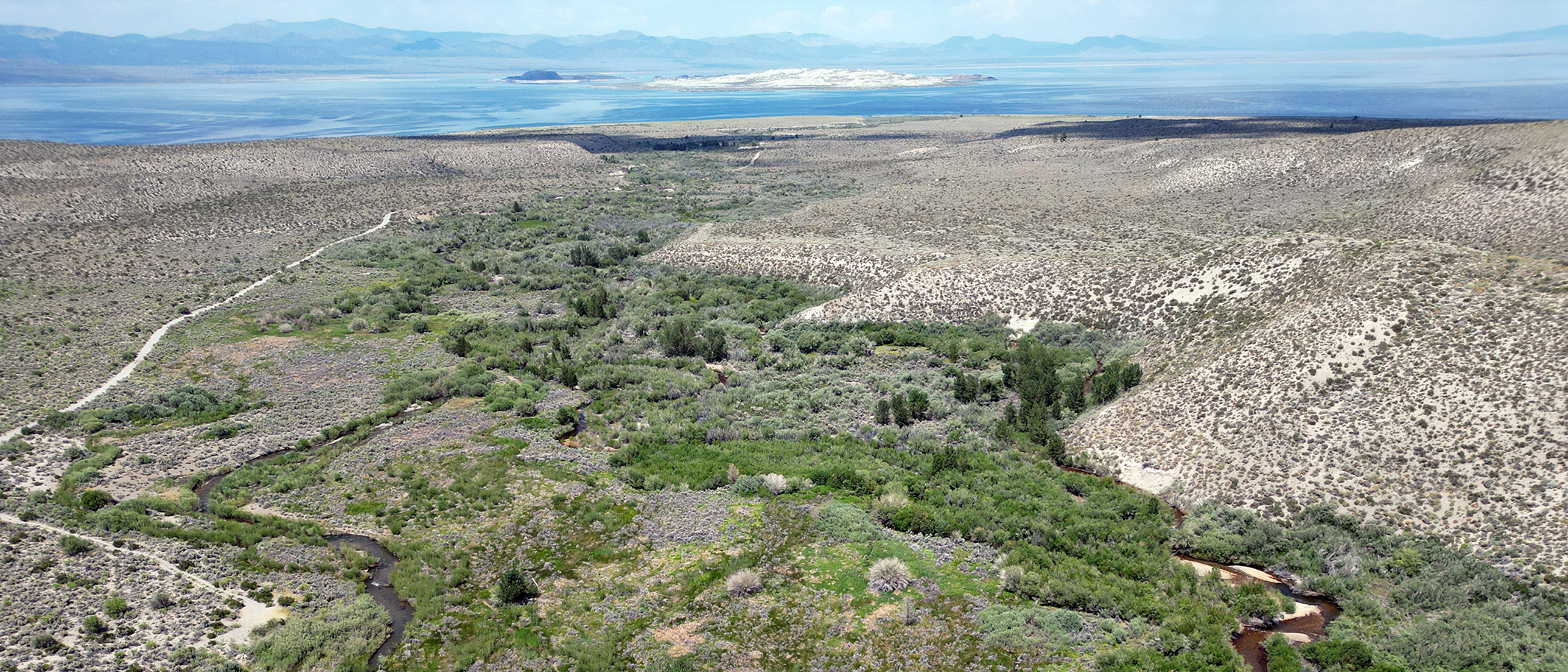
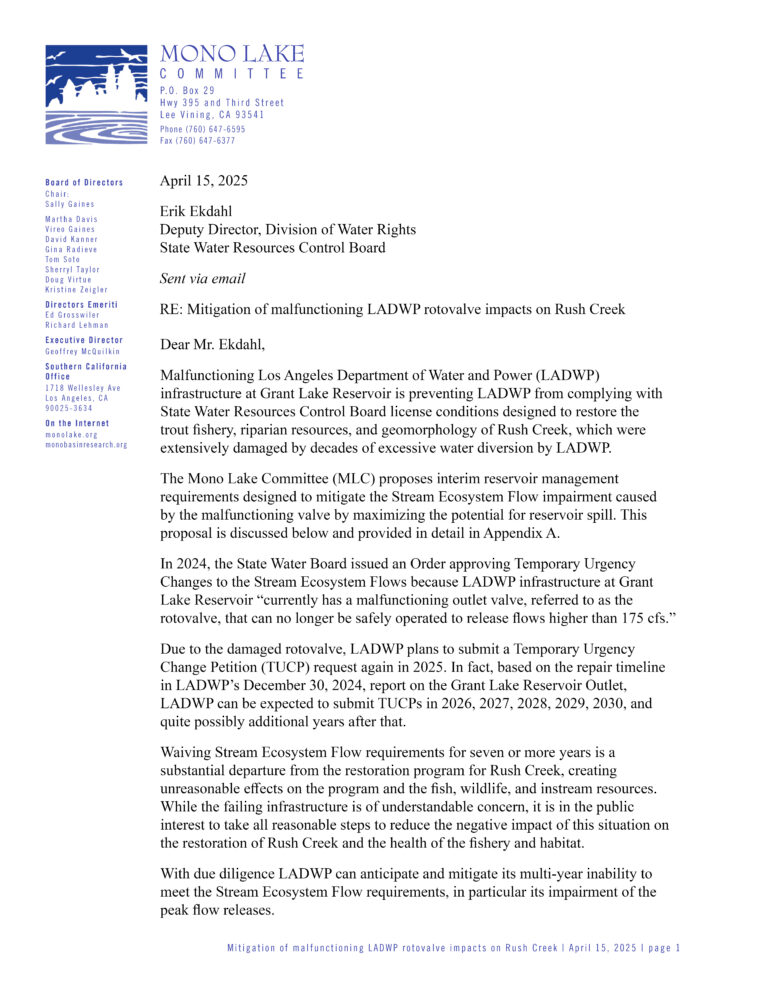
The Mono Lake Committee is proposing interim reservoir management requirements designed to mitigate the impacts to Rush Creek imposed by Los Angeles Department of Water & Power’s (DWP) aging and malfunctioning infrastructure at Grant Lake Reservoir. For the second year in a row, DWP is submitting a Temporary Urgency Change Petition (TUCP) based on these infrastructure problems. DWP will propose waiving mandated restoration flows for Rush Creek.
Although multiple years of additional TUCPs are likely, the Committee has identified that keeping Grant Lake Reservoir at a higher level could significantly offset negative impacts on Rush Creek. Today, the Committee submitted a detailed proposal to the California State Water Resources Control Board.
At the northern end of Grant Lake Reservoir, deep beneath the water, an aqueduct intake conveys water to a nearby rotovalve. Buried 80 feet underground beneath a shaft house and about the size of a compact car, the rotovalve is the only way to directly control water leaving the reservoir. The rotovalve regulates water returning to Rush Creek as well as surface water exports flowing from the Mono Basin to Los Angeles. The rotovalve is 89 years old and according to DWP, “the valve has been evaluated to be past its reliable service life.”
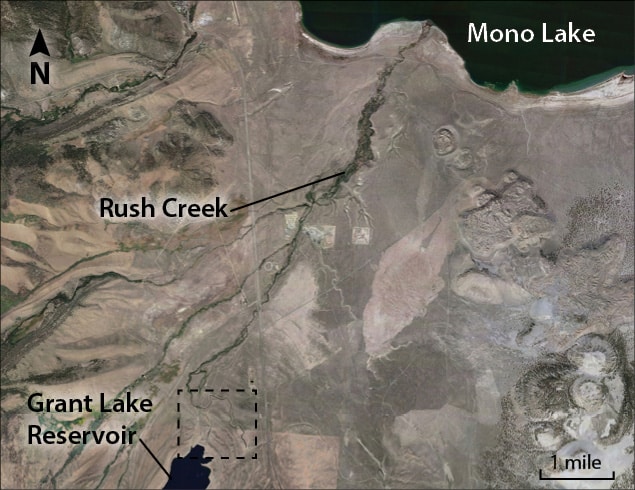
The rotovalve was designed to convey up to 380 cubic feet per second (cfs) of water, but in August 2023 it started cavitating, a phenomenon in fluid dynamics that causes severe vibration and metal fatigue. DWP eased back on the rotovalve operation after this event, limiting its maximum conveyance to 175 cfs of volume. This new limit is detrimental to Rush Creek as the restoration of the entire stretch below the reservoir depends on reliably delivering stream ecosystem flows (SEFs) of specific volume, timing, duration, and magnitude that exceed 175 cfs depending on the year’s volume of runoff. The health of the trout fishery, riparian resources, and the geomorphology of Rush Creek depend on a natural hydrograph that matches the precipitation year. Seasonal peak flows are the most directly affected, and unless the reservoir is managed at a high level for beneficial spilling, they can’t be delivered by the rotovalve alone.
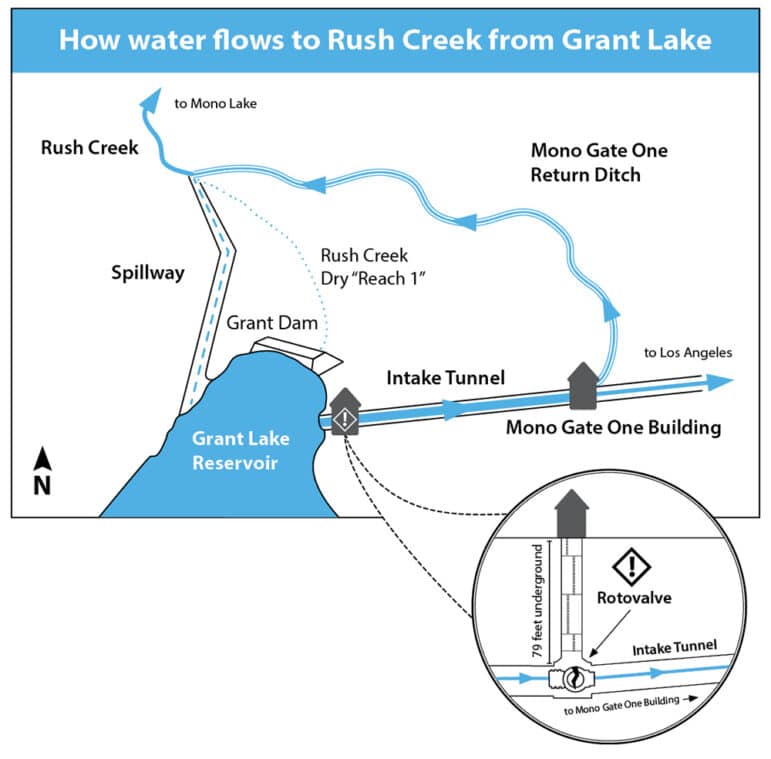
Worse, there is no contingency if the rotovalve fails further. If this occurs, the ditch that returns water to Rush Creek could go dry. Water could not move past the reservoir until it filled and passed over the spillway, entering Rush Creek below the return ditch. A vital fishery would be heavily impacted, and decades of restoration progress would be reversed. DWP would also lose the ability to convey any water from the north end of the Los Angeles Aqueduct to Los Angeles. While plenty of supply would exist further down the aqueduct for Los Angeles to be unaffected, lower Rush Creek would be catastrophically damaged.
Because of the malfunctioning valve, and the potential loss of controlled flow from Grant Lake Reservoir, in 2023 the Division Safety of Dams (DSOD) downgraded the dam’s condition assessment rating from “Satisfactory” to “Poor.”
Meanwhile, DWP has yet to complete final design and construction plans for the replacement of the valve or the installation of a new outlet agreed to back in 2013 and mandated by the State Water Board in 2021. DWP’s latest repair timeline, submitted to the State Water Board at the end of 2024, indicates that infrastructure work will extend to at least 2035 and possibly later. This will likely require multiple years of TUCPs that will sideline the restoration requirements of Rush Creek for seven or more additional years. Since DWP has known about the rotovalve’s vulnerability for a decade and the repair may take many more years, a multi-year plan is needed. Filing Temporary Urgency Change Petitions year after year is not appropriate for managing the situation, which is not “temporary” and did not have to become “urgent.”
The Committee’s proposal outlines a helpful plan to maximize the potential for beneficial reservoir spill and more reliable delivery of the mandated peak flows that Rush Creek requires for successful restoration. With due diligence DWP can anticipate and manage for spill up to a year ahead by keeping Grant Lake Reservoir at a higher level. The proposal is not a dramatic departure from the current management regime, but it holds meaningful mitigation for Rush Creek until the malfunctioning rotovalve is finally replaced.
The State Water Board is currently considering DWP’s petition and a final order, that may have requirements, is due by early June.
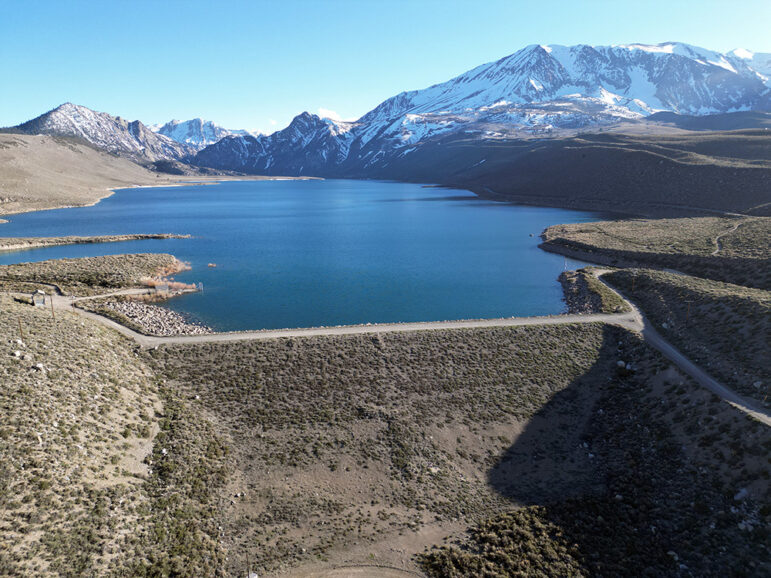
Top photo by Geoff McQuilkin.
